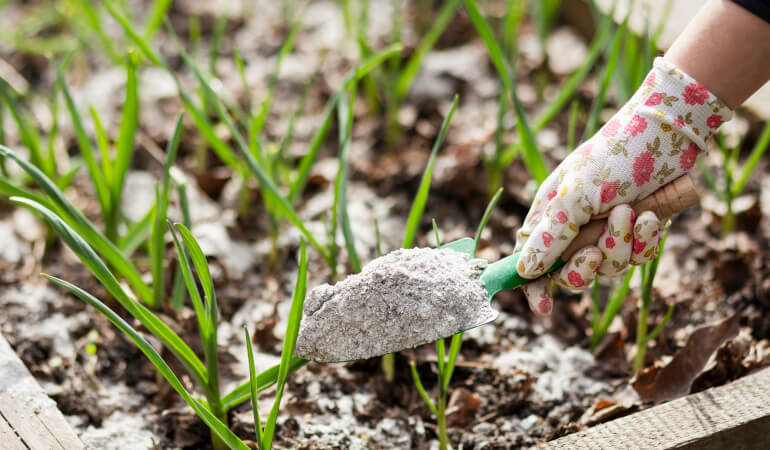
For as long as people have kept gardens, they’ve been tossing the remains of last night’s fire back into the earth. From old farmsteads to backyard plots, burnt ash has had a place in soil and crops. Some gardeners swear by it. They say it feeds the ground and keeps plants strong. Others warn it can do more harm than good if you don’t know what you’re doing.
So, is ash good for soil? And more to the point, is ash good for the garden you tend today?
In this post, you’ll dig into how burnt ash affects soil health, where it can help, and when you should think twice before spreading it. You’ll learn the benefits, the risks, and the best way to use it. So…
Table of Contents
Is ash good for the garden, and should you use it?
Burnt ash is the pale dust left after wood or other matter is burned. Wood ash, in particular, holds nutrients which your plants need. Think potassium, calcium, and magnesium.
Not all ash is the same, though. Hardwood ash, from trees like oak or beech, is usually richer in potassium and calcium. That makes it more powerful as a soil booster. Softwood ash, like pine or spruce, has fewer nutrients overall, but still holds trace elements that can help. In general, hardwood will always give you more bang for your shovel.
Don’t think just any ash will be good for your garden, though. The type of material burned also matters a lot.
Take BBQ ash, for example. If it comes from natural lumpwood charcoal, you can use a little without worry. But most briquettes are held together with binders or chemicals. Those have no place in your soil. So, is BBQ ash good for soil? Only if you know for certain it’s pure wood. The same rule applies to charcoal ash. Fine if it’s untreated, best avoided if not.
Then there’s cardboard ash, which you should leave out of the garden altogether. Cardboard often carries glues, dyes, or coatings that turn toxic once burned. Cardboard ash is NOT good for the soil. Paper ash is safer if the paper is plain and untreated, though it’s low in nutrients and won’t add much. Glossy or coloured paper, on the other hand, can leach chemicals you don’t want anywhere near your plants.
Leaf ash is harmless, but it’s not nutrient-rich. In short, burnt leaves won’t do damage, but they won’t improve your soil either. The same goes for cigar ash. Tiny amounts won’t hurt, but it doesn’t carry any useful nutrition for plants.
The best kind of ash to use in the garden is firewood ash from clean, untreated timber. That’s the one full of potassium, calcium, and magnesium. These are the kind of nutrients that actually make a difference.
Benefits of using burnt ash in soil
Let’s dive a little deeper into why wood ash is good for the garden.
- Nutrient enhancement. Plants need the already mentioned potassium for strong stems, healthy flowers, and good fruiting. You can safely put wood ash in your vegetable garden. Tomatoes, potatoes, and roses will benefit. The calcium and magnesium in it will improve soil structure and plant resilience. You can even sprinkle a tiny bit of ash on a tired lawn, but not too much and it will help.
- Soil pH adjustment. Another reason people add ash is to shift soil pH. Wood ash is alkaline, so it reduces acidity in the ground. This can help plants that dislike sour soils, such as lilacs or brassicas. Ok, so is ash good for acidic soil, you ask? Only if you want to make it less acidic. If you already garden on chalky or alkaline ground, wood ash is not the right choice. Then it can push pH too high and lock up nutrients.
- Improved drainage and aeration. When you mix it into heavy clay or compacted beds, fine ash particles can help loosen the soil. This boosts drainage, reduces waterlogging, and improves aeration around the roots. It’s not a miracle fix, mind you. However, as part of compost or spread lightly, it does make soil easier to work with.
- Pest deterrent. A common question is whether ash repels pests. Wood ash can discourage slugs and snails if sprinkled as a dry barrier around plants. The fine texture sticks to their bodies, so they avoid crossing it. That said, it washes away quickly in the rain. And how about vermin, does wood ash deter rats? No, there’s no proof ash has any effect on them.
What are the disadvantages of wood ashes?
Sounds like wood ash is the best thing there is, but it does have its downsides.
- Excessive application. You know when people say too much of a good thing? If you put too much ash, you can make the soil highly alkaline. This blocks nutrient uptake and leads to poor plant growth and yellowing leaves. A handful or two per square metre is usually enough.
- Soil imbalance. Because wood ash raises soil pH, it doesn’t suit all gardens. If you grow acid-loving plants or already sit on alkaline soil, ash will cause problems.
Which plants can benefit from burnt ash?
Although ash isn’t a cure-all, certain crops and flowers respond well when it’s used right. The key is to know which plants like wood ashes and which don’t.
Vegetables and fruits. As we’ve mentioned before, tomatoes and potatoes love the extra potassium in wood ash. It helps them flower more, set fruit better, and taste richer. Still, keep in mind that for potatoes, excess ash on already alkaline soil can encourage scab, a disease that leaves their skins rough and spoiled. So, be careful. Brassicas like cabbage, kale, and broccoli also do well because they prefer soil that’s not too acidic. They use the calcium in ash to stay strong. Fruit trees, including apples, pears, plums, and cherries, respond with heavier blossoms and better harvests.
Flowering plants. Some flowering plants prefer soil that leans just a touch alkaline. Lilacs, clematis, and many cottage-style garden flowers bloom stronger when the soil is sweetened with a sprinkle of ash. And if you’re wondering, is ash good for roses? Yes. It can help by adding potassium and lifting soil pH if your ground is too acidic. Roses fed with a careful dusting of ash often produce richer, fuller blooms.
What plants don’t like wood ash?
Think of anything that naturally grows in woodland or heathland soils. Those plants prefer things on the acidic side.
Acid-loving crops and ornamentals are the main ones to avoid. Blueberries, cranberries, rhododendrons, camellias, and azaleas all thrive in acidic soil. If you raise the pH with wood ash, you’ll stunt their growth and starve them of nutrients.
Root vegetables like carrots and parsnips also suffer when too much ash is added. High alkalinity can make them fork, twist, or grow misshapen.
How to use burnt ash when gardening
Ash can help soil, but only when it’s applied the right way. Too much, or spread at the wrong time, and you’ll do more harm than good. With that said, here’s how to use ash on a garden so your plants benefit.
- How much to add? – A light sprinkle is enough. Roughly one small handful per square metre (about 70–100g). How you spread wood ash on lawn areas is by scattering it thinly so the grass doesn’t get smothered. Always water it in after, or rake it through the soil.
- When to apply? – Autumn or winter is when the soil is bare and rainfall can wash the nutrients down. You can also add small amounts in early spring, before you plant. Avoid spreading ash in your garden during the height of summer. Dry soils combined with alkaline ash can stress plants.
- Mixing with compost – You can put ash in compost. It’s often the best place for it, too. A thin layer of ash sprinkled through a compost heap helps balance acidity, speeds up decomposition, and adds minerals to the finished mix. Just don’t dump it in thick layers, as that’ll slow everything down.
- Balance with other amendments – Ash is rich in potassium but doesn’t add nitrogen. To keep your soil balanced, mix ash with organic matter like composted manure, green waste, or kitchen scraps. This way, you get a full spectrum of nutrients instead of just one.
Don’t let your garden go to waste! Schedule your garden maintenance now!
Enter your postcode to view our rates and availability in your area.
For questions about the services we offer visit our main site
Takeaways
- Only clean, untreated firewood ash is good for your garden;
- Burnt wood ash is good for vegetables like tomatoes and potatoes, fruit trees and flowers like roses and lilacs;
- It’s harmful for acid-loving plants such as blueberries, rhododendrons, azaleas, and camellias;
- Burnt ash can temporarily repel slugs and snails, but it doesn’t deter rats or other vermin;
- Always use sparingly and wisely. Too much of it can harm your soil.



